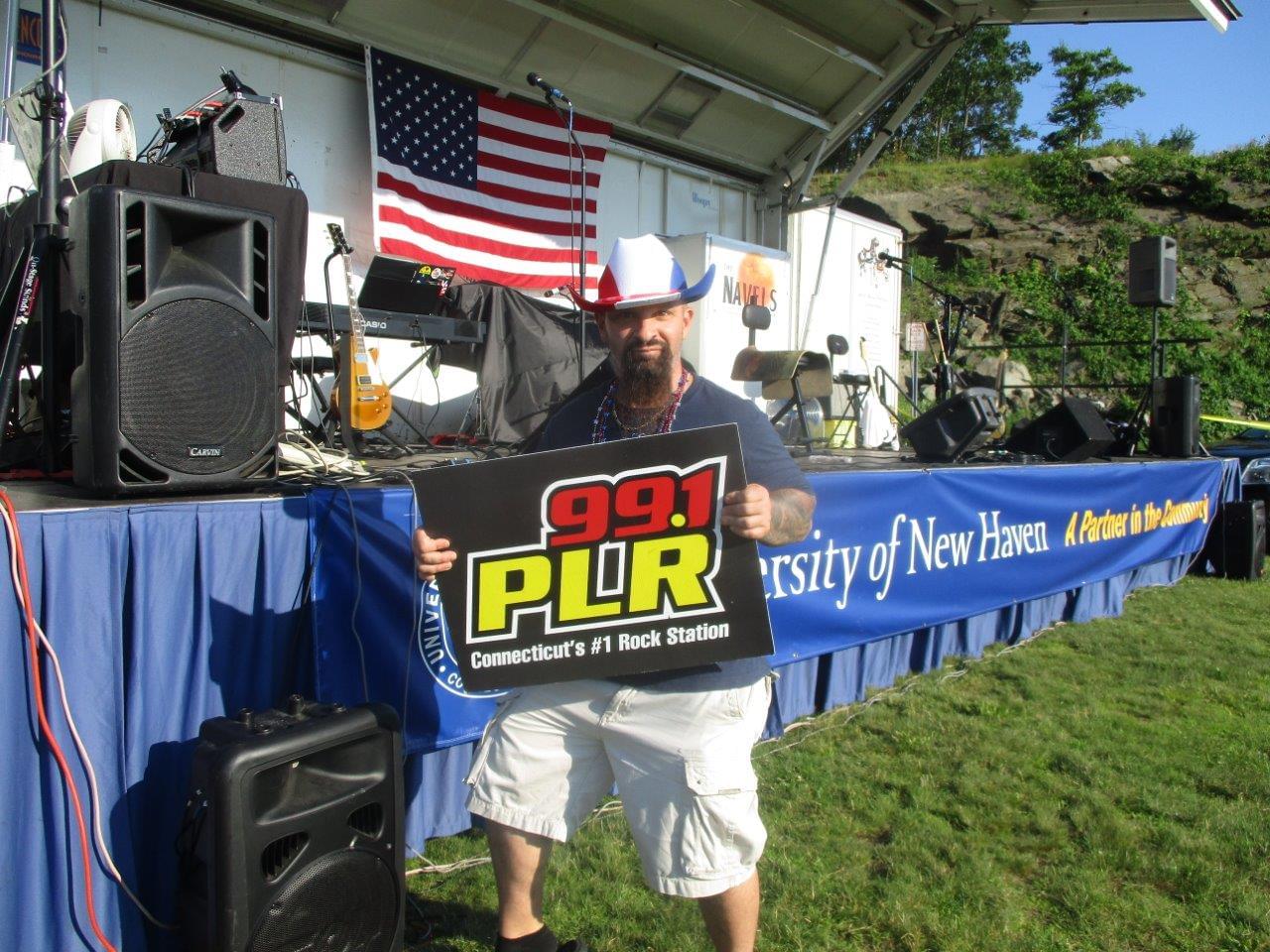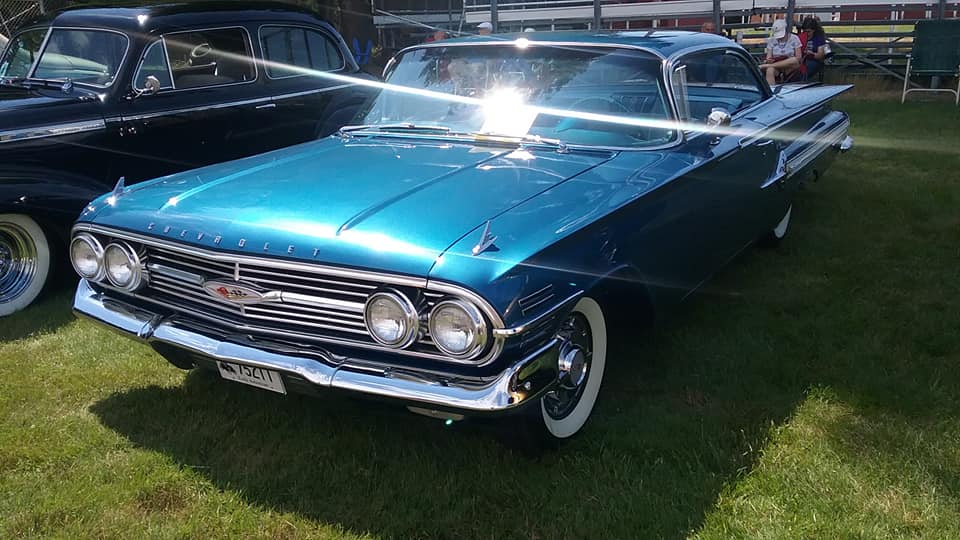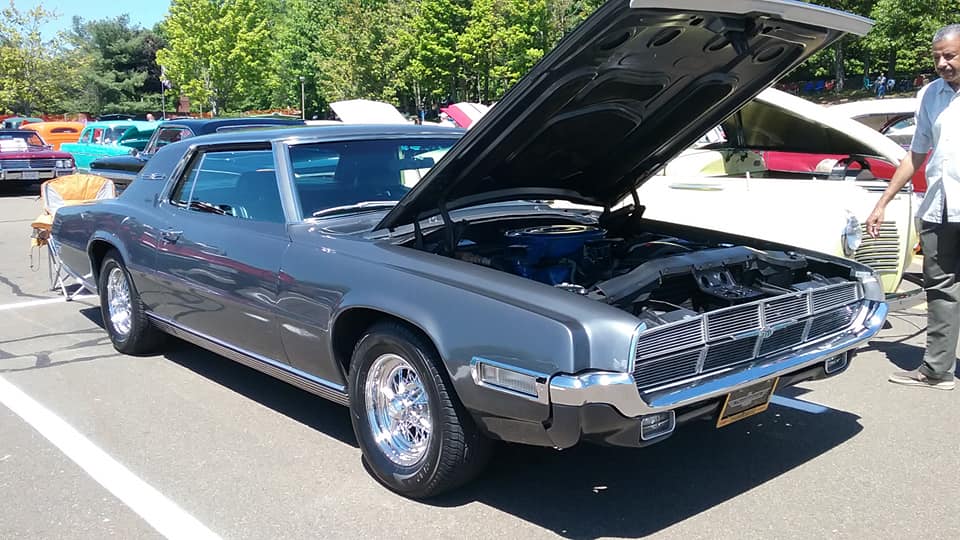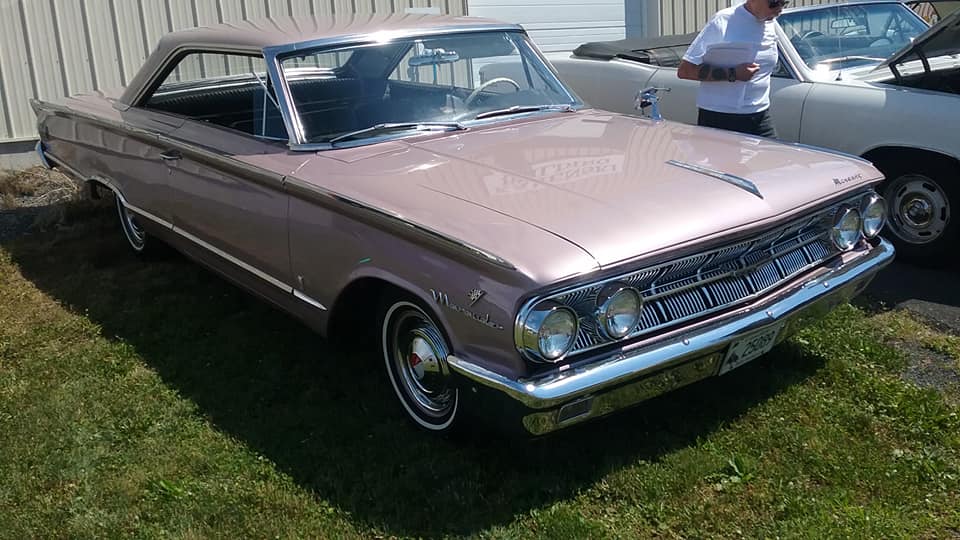It was an awesome night in West Haven for their fireworks display. Did we see you there?


Car: Chevrolet Impala Hardtop
Year: 1960
What makes it special: Beginning in 1959, the second-generation Chevrolet Impala was redesigned. Sharing bodyshells with lower-end Buicks and Oldsmobiles as well as with Pontiac, part of a GM economy move, the Chevrolet’s wheelbase was 1-1/2 inches longer. Using a new X-frame chassis, the roof line was three inches lower, bodies were two inches wider, and curb weight increased. Its tailfins protruded outward, rather than upward. Impala became a separate series, adding a four-door hardtop and four-door sedan, to the two-door Sport Coupe and convertible.
What made it famous: The 1960 Impala models reinstated three round taillights on each side, and a white band running along the rear fenders. The available V8’s were reduced to seven, in 283 cu in or 348 cu in displacements. The carbureted Turbo-Fire 283 cu in V8 could have either 170 or 230 hp. The 348 cu in was available in 250 to 320 hp with a 350 hp Special Super Turbo-Thrust with triple 2-barrel carburetors, 11.25:1 compression ratio, and dual exhausts. Fuel injection was no longer an option on full-size Chevrolets. New to the options list was speed and cruise control. A contoured hooded instrument panel held deep-set gauges.
Why I would want one: I am in love with the low-riding, second-generation Impala model. It has that “Space Race” styling, love the outward-protruding tailfins, giving it the feel of a rocket ship.
Fun fact: The Impala name was first used for the full-sized 1956 General Motors Motorama show car that bore Corvette-like design cues, especially the grille.


Pat from CT Park Shame posted a photo of a VERY familiar car…turns out AJ had a whole explanation for his terrible parking (0:00), Attorney Norm Pattis on the phone to talk about another case he’s involved with that includes a Russian billionaire and mob connections. But he does answer a few questions about Fotis Dulos and the missing New Canaan mother (15:27), Dr. Tammy in studio with comedian Brooke Louellen, who wants to find a husband. Steve in Bridgeport called in to pitch himself, and did a pretty good job! (26:55), and it was supposed to be Dumb Ass News, but a surprise call from Gayle King interrupted regularly scheduled programming, so she could welcome Ashley to the show (40:46).

6:00. Milford man arrested for bank robbery.
6:13. Sports Powered by Road Ready Used Cars.
6:20. AJ was attacked by a squirrel!
6:30 – 6:40. Call in with your crazy animal encounters for Nickelback tickets! 877-764-2535
7:00. Ross Perot died.
7:13. Sports Powered by Road Ready Used Cars.
7:20. Dumb Ass News. Tribe member injured himself while listening to Dumb Ass News.
7:30 – 7:40. The worst parking jobs on the planet! Pat from CT Park Shame is in studio.
8:00. Attorney Norm Pattis is on the phone.
8:13. Sports Powered by Road Ready Used Cars.
8:20 – 8:40. Brooke Louellen is 26 and looking for a husband. Can Dr Tammy help her?
9:00. I think we hear Wedding Bells!
9:13. Sports Powered by Road Ready Used Cars.
9:20. Dumb Ass News…..GAYLE KING CALLED THE SHOW!!!
9:30. Jingles’ friends are at the parade to celebrate the US Soccer win!!!

Car: Ford Thunderbird 2-Door
Year: 1969
What makes it special: For the 1967 through 1971 model years, the fifth-generation Thunderbird was larger, but still a personal luxury car produced by Ford. The styling had been updated twice during this period.
What made it famous: The Thunderbird now sported a fish mouth front grille with hidden headlights, the sides were of a fuselage type with a coke-bottle beltline after the rear windows. It now featured larger c-pillars, and had sequential turn signals. The 360hp, 429 big-block V8 was introduced the previous year, and had wedge-style heads giving the car more power.
Why I would want one: You don’t see many around, especially in two-door models.
Fun fact: Lincoln’s 1969 Continental Mark III was based on the 4-door version of Ford’s Thunderbird.

The Norco Bank Robbery was the most dramatic in American history, and Peter Houlahan wrote a book about it and takes us through the entire, insane timeline (0:00), Dr. McHugh brought a severed toe in studio, to see if Ashley would drink a cocktail…that had a “toe” in it! (10:07), Attorney Rich Rochlin is the divorce attorney in the Fotis Dulos custody case and explained why the current charges regarding evidence tampering are not affecting the proceedings (17:34), and Intern Kaylee made a demo for an air shift, so Chaz and AJ ripped it to shreds (30:25).

Car: Mercury Marauder Hardtop
Year: 1963 1/2
What makes it special: The Marauder was a nameplate used by three different full-sized models produced by Mercury. It got its name because it featured the most powerful engines available in a Mercury model, and was purposely marketed as the highest-performance version of a full-sized car.
What made it famous: The Marauder name was originally a trim package for Mercury full-sized cars, including the Monterey, Montclair, S-55, and the Park Lane. The Marauder debuted as a 1963 1/2 Sports model, and was a two-door hardtop. It was powered by Ford FE-Series V8 powerplants. Standard was a 390 cu in Marauder V8, and the 406 cu in V8 was replaced by a 427 cu in Super-Marauder V8 for the 1964 model year. Transmission offerings were a 3-speed and 4-speed manual and a 3-speed Multi-Drive Merc-O-Matic.
Why I would want one: I love the large engine, full-sized Mercury’s. They were used very often in Stock Car racing back in the day.
Fun fact: The Marauder nameplate made is return in 2003 as a high-performance Mercury Grand Marquis.

6:00. Where is Connecticut on the list of best and worst states to start a business?
6:13. Sports Powered by Road Ready Used Cars.
6:20. Peter Houlahan tells us about the most dramatic bank robbery in U.S. history.
6:30. What if you were going to rob a bank?
6:40. Any bank robbers listening?
7:00. And now…a dog in West Haven is brutally murdered.
7:13. Sports Powered by Road Ready Used Cars.
7:20. Dumb Ass News. No honey shaking in church.
7:30. Ashley’s peace toes. Normal or weird? Dr. McHugh is in studio!
7:40. Person with the weirdest toes gets Nickleback tickets. Call us at 877-764-2535!
8:00. The missing mom case brings back bad memories for this Tribe member.
8:13. Sports Powered by Road Ready Used Cars.
8:20 – 8:40. Fotis Dulos’ divorce attorney is on the phone.
9:00. A 19 year old saves a bikers life. He’s on the phone!
9:13. Sports Powered by Road Ready Used Cars.
9:20. Dumb Ass News. Road rage and gun turns bad for this husband.
9:30. AJ hates squirrels.